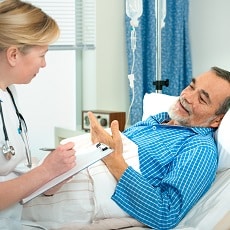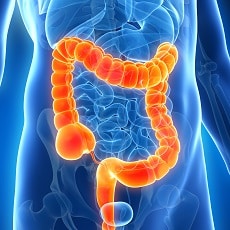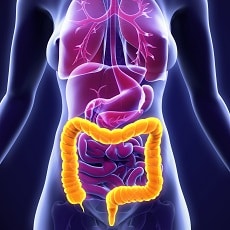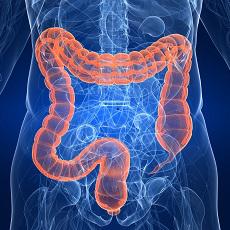
Sigmoidoscopy

Summary
What are colonoscopy and flexible sigmoidoscopy?
Colonoscopy and flexible sigmoidoscopy are procedures that let your doctor look inside your rectum and colon (large intestine). They use instruments called scopes. Scopes have a light and a tiny camera attached to a long, thin tube. These procedures let your doctor see problems such as inflamed tissue, ulcers, polyps, and cancer.
Colonoscopy checks your entire colon and rectum. Flexible sigmoidoscopy checks the rectum and the lower colon (sigmoid colon) only.
What is a virtual colonoscopy?
A virtual colonoscopy also looks inside your rectum and part of your colon. But it does not use a scope. Instead, it is an x-ray test. Another name for this test is CT colonography.
Who needs a colonoscopy, virtual colonoscopy, or flexible sigmoidoscopy?
You may need a colonoscopy, virtual colonoscopy, or flexible sigmoidoscopy to find the cause of unexplained symptoms such as:
- Bleeding from your anus (the opening of the rectum through which stool passes out of your body)
- Changes in your bowel activity, such as diarrhea
- Pain in your abdomen (belly)
- Unexplained weight loss
Doctors also use these procedures to screen for colon polyps and cancer. Screening is testing for diseases when you have no symptoms. It may find diseases at an early stage, when they are easier to treat. If aren’t at higher risk for colorectal cancer, your health care provider will likely recommend you start getting screenings at age 45. If you at higher risk, you may need to start getting screened for colorectal cancer earlier.
There are also other tests to screen for colorectal cancer, including stool tests. Talk with your provider about which test is right for you and when and how often you should get it.
How do you prepare for a colonoscopy, virtual colonoscopy, or flexible sigmoidoscopy?
To prepare for a colonoscopy, virtual colonoscopy, or flexible sigmoidoscopy, you will need to:
- Talk with your doctor about any health problems you have and all of the medicines and supplements that you take. You may need to stop taking some of your medicines and/or supplements before the procedure.
- Follow the bowel prep instructions from your doctor. The bowel prep clears the stool out of your colon, so your doctor will be able to see the colon during the procedure:
- You may need to follow a clear liquid diet, usually for about one day before the procedure. Avoid red or purple drinks or gelatin; the dye can look like blood in the colon. You probably need to stop eating and drinking the night before the exam.
- You will need to take some laxatives. They may be pills, a powder that you dissolve in liquid, an enema, or a combination of these. The laxative will cause diarrhea, so you need to stay close to the bathroom.
For a virtual colonoscopy, you will also need to drink a contrast medium the night before. The contrast medium is a dye or other substance that is visible on x-rays. It can help your doctor tell the difference between stool and polyps.
How are colonoscopy, virtual colonoscopy, and flexible sigmoidoscopy done?
For a colonoscopy:
- You will have the procedure at a hospital or outpatient center. It usually takes 30 to 60 minutes.
- You will get IV (intravenous) sedatives or anesthesia, usually along with pain medicine, so you won’t be awake or feel pain during the procedure.
- You’ll lie on a table while the doctor inserts a colonoscope through your anus and into your rectum and colon. The scope inflates your large intestine with air for a better view. The camera sends a video image to a monitor so your doctor can see your colon.
- Once the scope reaches the opening to your small intestine, the doctor will slowly remove the scope. While doing so, your doctor will examine your colon again.
- If you have polyps, your doctor may remove them and send them to a lab for testing. Most polyps aren’t cancer, but removing them can prevent them from becoming cancer later on.
- If you have abnormal tissue, your doctor may do a biopsy.
- The sedative or anesthesia takes time to wear off completely. You’ll stay at the hospital or outpatient center for 1 to 2 hours after the procedure. Then you will need someone to drive you home.
For a virtual colonoscopy:
- You will have the procedure at a hospital or outpatient center. It usually takes about 10 to 15 minutes.
- You do not need anesthesia.
- You’ll lie on a table while a specially trained x-ray technician inserts a thin tube through your anus and into your rectum. The tube inflates your large intestine with air for a better view.
- The table slides into a tunnel-shaped device where the technician takes the x-ray images. You will turn over on your side or stomach to get more images taken.
For a flexible sigmoidoscopy:
- You will have the procedure at a hospital, medical office, or outpatient center. It usually takes about 20 minutes.
- You do not need anesthesia.
- You’ll lie on a table while the doctor inserts a thin tube through your anus and into your rectum. The tube inflates your large intestine with air for a better view. The camera sends a video image to a monitor so your doctor can see your lower colon.
- Once the scope has reached the top of the lower colon, the doctor will slowly remove the scope. While doing so, your doctor will examine your lower colon again.
- If you have polyps, your doctor may remove them and send them to a lab for testing. Most polyps aren’t cancer, but removing them can prevent them from becoming cancer later on.
- If you have abnormal tissue, your doctor may do a biopsy.
What should I expect after a colonoscopy, virtual colonoscopy, or flexible sigmoidoscopy?
You may feel cramping in your abdomen or bloating during the first hour after the any of these procedures. If the doctor removed polyps or performed a biopsy, you may have light bleeding from your anus. This bleeding is normal.
For a virtual colonoscopy or a flexible sigmoidoscopy, you go back to your regular activities and diet right after the test. For a colonoscopy, you can expect a full recovery and return to your normal diet by the next day.
Your doctor will give you the results of your procedure. If you had a biopsy, it can take a few days to get those results.
NIH: National Institute of Diabetes and Digestive and Kidney Diseases
Source: MedlinePlus, National Library of Medicine.
Information pulled from the Colonoscopy page.
MedlinePlus brings together authoritative health information from the National Library of Medicine (NLM), the National Institutes of Health (NIH), and other government agencies and health-related organizations.
Colonoscopy
National Institute of Diabetes and Digestive and Kidney Diseases
Listen to our
latest Podcast!





